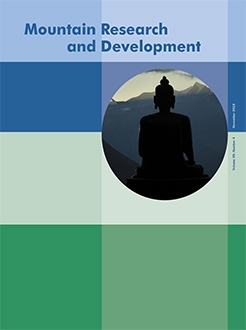The Spatial and Economic Transformation of Mountain Regions: Landscapes as Commodities. By Manfred Perlik. London, UK: Routledge, 2019. xv + 278 pp. Hardback: US$ 140.00, ISBN 978-1-138-78408-6. E-book: US$ 49.46, ISBN 978-1-315-76836-6.
Manfred Perlik is one of the leading scholars who broke new ground by bringing the urban problematique into the mountains. Mountain regions have mostly been conceived as natural environments or as rural areas, but this bias has impeded consideration of the urban dimension of these regions: ie of cities within the mountains and of the interactions of mountain areas with urban areas in the lowlands. This book follows this groundbreaking path by focusing specifically on “the new relationship between metropolitan areas and mountain regions” (p 2). It initiates a debate about the relationships between mountains and their surrounding areas and how these relationships are affected by urbanization and globalization. This relational perspective runs through the book and represents in itself an important contribution to debates both within mountain scholarship and in the political arena.
The book considers spatial and socioeconomic developments, changes, and transformations in mountain areas. These evolutions are depicted in Part II of the book; Part I presents the social scientific and philosophical theories on which the analyses are based. The main focus of the book, which constitutes its originality, is on a specific paradigmatic shift: from Fordism to “liberal-productivistpost-Fordism” (p 2), to use the words of the author. This shift started about 40 years ago and still has huge impacts on mountain environments, societies, and economies. Indeed, Perlik highlights major impacts related to this post-Fordist turn: deindustrialization, the city as a major actor, and the “transformation of rural areas for specialized urban functions” (p 233). In the Fordist period, policies aimed to “reduce spatial disparities in the interests of territorial cohesion” (p 29); policies have also evolved under the current post-Fordist model, which promotes competitiveness and functional territories.
A main thesis of the book is that “the economic transformation provokes a spatial transformation” (p 32), which clearly makes this a geography book. The main argument is that the transformations mentioned above change “the role that mountains are assigned in a globalized world under liberal-productivist conditions” (p 120). In other words, this changing context affects the relationships between areas as well as between territorial functions. A major goal pursued by the author is to highlight and examine these spatial disparities. Based on the relational approach presented above, he stresses the asymmetry of territorial relationships between mountain regions and the metropolises situated in the surrounding lowlands. He states that this paradigmatic shift initiated “a fundamental reorganization of the spatial distribution of resources and power” (p 180). This is one of the key issues examined in the book, and Part III is rightfully entitled “A new level of inequality.” So Part III considers the developments presented in Part II in the light of inequality. The main argument of the book is “that the post-Fordist turn did not increase the options of the mountain regions; instead, it reduced them to the selective use of landscape commodities” (p xiii). In this context, Perlik critiques the devaluation of “the productive aspects of mountain areas in favor of consumptive functions for an external clientele” (p 116). This is engaged work, and many claims do have a political resonance.
After this critical perspective on the current developments occurring in mountain regions, the future does not seem bright. In Part IV, which concludes the book, Perlik discusses “possible trajectories of mountain regions” (p 219) and options for coping with, or more precisely moving beyond, these negative trends. He depicts 3 main “trajectories.” The first, “the trajectory of liberal-productivist mainstream,” focuses on economic efficiency and expresses the current trend characterized by the functional integration of mountain hinterlands by lowland metropolises. The second, “the trajectory of exaggerated identities,” focuses on cultural identity and is characterized by a regionalist approach opposing outside influences. The third, “the cohesive trajectory,” tries to find an intermediate way between the 2 previous ones, seeking to avoid polarization by renegotiating the relationships of mountain regions with the lowlands. Although the first 2 trajectories are illustrated, the third one still needs to be elaborated, and the terms of the relationships between mountains and lowlands to be defined. The author advocates for this third trajectory, which he presents as an alternative path to coping with the existing development trends in mountain areas. He recommends moving “beyond the liberal-productivism”—which is the title of the final chapter and clearly resonates like a political statement.
Based on the research experience of the author, case studies from the European Alps predominate throughout the book. He acknowledges this but still considers that global mountain development will follow a development path similar to the one initiated in the European Alps. Thus, the book also considers other mountain ranges and is therefore of relevance to mountains worldwide. More broadly, Perlik advocates for mountain research: Chapter 1, entitled “Why study mountains?”, is specifically devoted to this.
This academic book, which is a reworked version of a habilitation thesis, is not that easy to read. Yet it is an important scientific mountain book, based on in-depth and years-long research. It makes a major contribution to the questioning of the political positioning of mountain regions in the contemporary world. The critical approach, running through the book, is a goldmine providing an abundance of thoughts and of new avenues of research to examine and discuss the mountain problematique.





